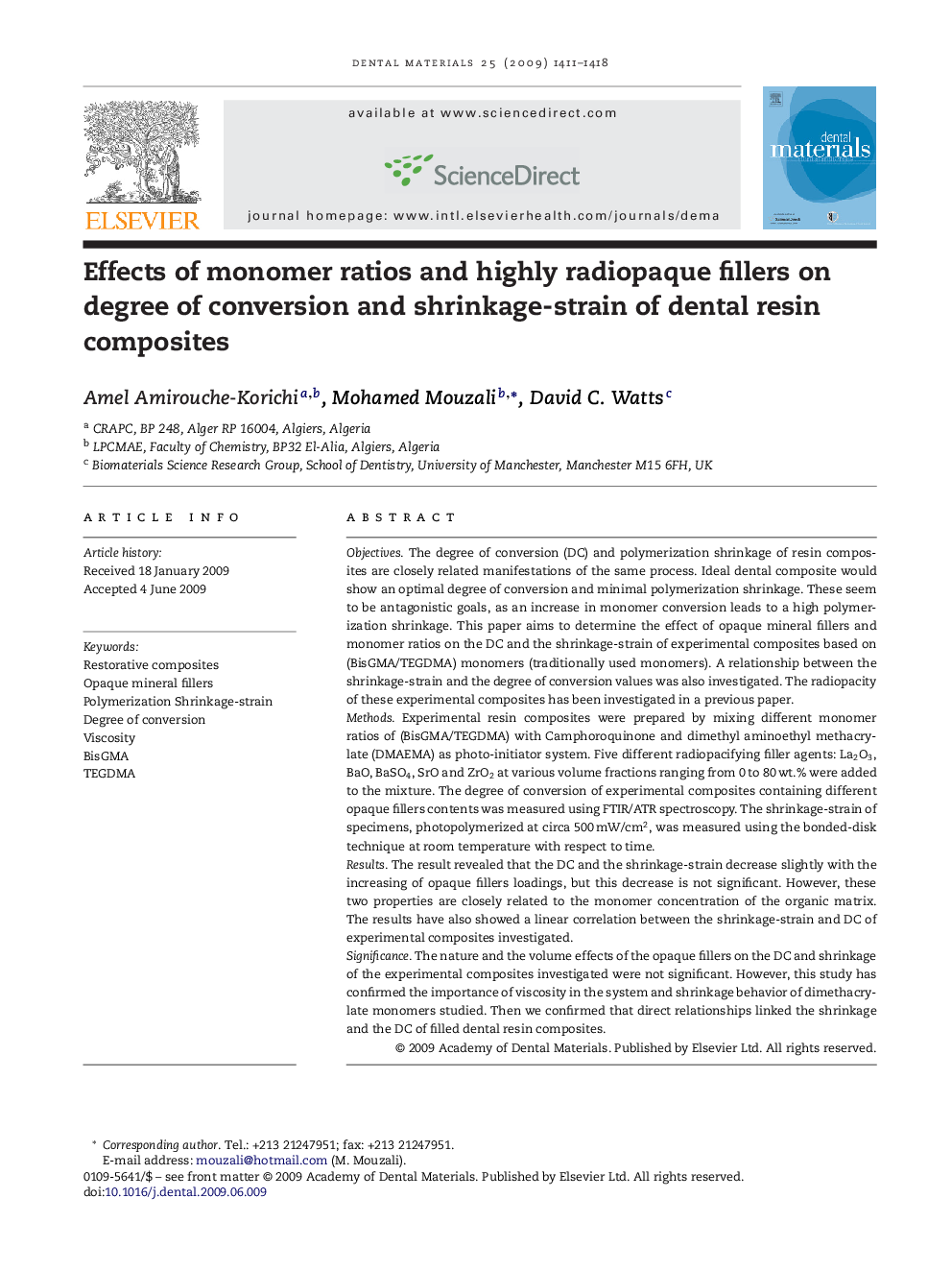| Article ID | Journal | Published Year | Pages | File Type |
|---|---|---|---|---|
| 1422942 | Dental Materials | 2009 | 8 Pages |
ObjectivesThe degree of conversion (DC) and polymerization shrinkage of resin composites are closely related manifestations of the same process. Ideal dental composite would show an optimal degree of conversion and minimal polymerization shrinkage. These seem to be antagonistic goals, as an increase in monomer conversion leads to a high polymerization shrinkage. This paper aims to determine the effect of opaque mineral fillers and monomer ratios on the DC and the shrinkage-strain of experimental composites based on (BisGMA/TEGDMA) monomers (traditionally used monomers). A relationship between the shrinkage-strain and the degree of conversion values was also investigated. The radiopacity of these experimental composites has been investigated in a previous paper.MethodsExperimental resin composites were prepared by mixing different monomer ratios of (BisGMA/TEGDMA) with Camphoroquinone and dimethyl aminoethyl methacrylate (DMAEMA) as photo-initiator system. Five different radiopacifying filler agents: La2O3, BaO, BaSO4, SrO and ZrO2 at various volume fractions ranging from 0 to 80 wt.% were added to the mixture. The degree of conversion of experimental composites containing different opaque fillers contents was measured using FTIR/ATR spectroscopy. The shrinkage-strain of specimens, photopolymerized at circa 500 mW/cm2, was measured using the bonded-disk technique at room temperature with respect to time.ResultsThe result revealed that the DC and the shrinkage-strain decrease slightly with the increasing of opaque fillers loadings, but this decrease is not significant. However, these two properties are closely related to the monomer concentration of the organic matrix. The results have also showed a linear correlation between the shrinkage-strain and DC of experimental composites investigated.SignificanceThe nature and the volume effects of the opaque fillers on the DC and shrinkage of the experimental composites investigated were not significant. However, this study has confirmed the importance of viscosity in the system and shrinkage behavior of dimethacrylate monomers studied. Then we confirmed that direct relationships linked the shrinkage and the DC of filled dental resin composites.
